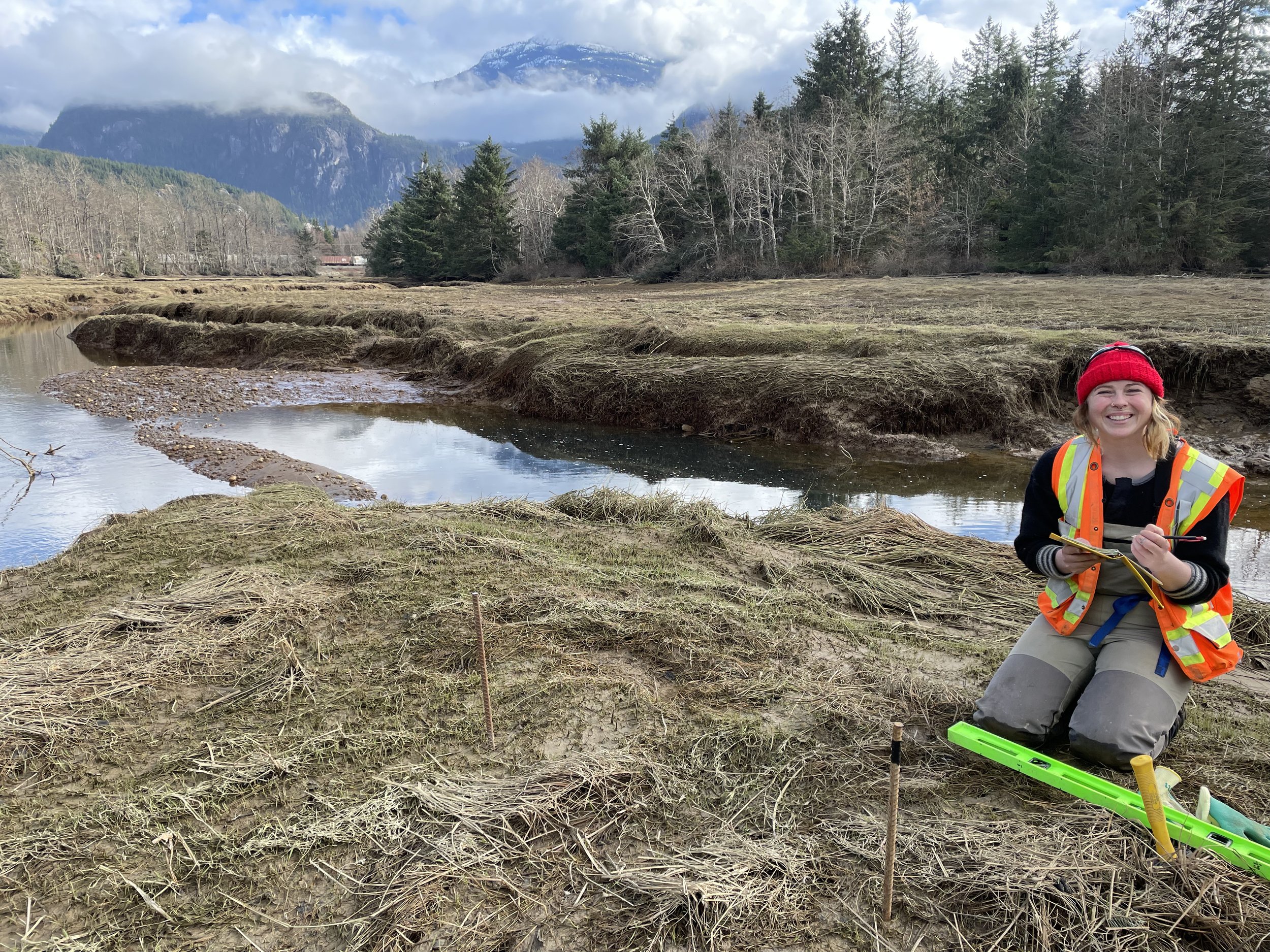Knowing our Fish Creeks in Átl'ḵa7tsem/Howe Sound
Grace Mackie. Photo by Lora Tryon, Laketrail Consulting
Átl’ḵa7tsem / Howe Sound is known for its rugged coastal forest ecosystems supporting a variety of species, including various salmonid species. Riparian Area Regulations help protect these ecosystems that are essential fish habitats. As part of our work on Other Effective Conservation measures (OECMs), we have established a project to check on the currently available data to ensure our knowledge is up to date and we are not missing opportunities to enhance conservation efforts to help support fish habitat and buffer zones. This information will connect us with those stewards, help inform what conservation efforts are at work and find opportunities to improve.
Over 45 recorded fish-bearing creeks that drain into Átl'ḵa7tsem / Howe Sound are recorded in the Marine Reference Guide, the online map of the region’s aquatic areas. Data layers rely on open sources for reporting and recording.
Spawning channel at McNab Creek 2004- created as a compensation channel -
Many non-government and government-funded organizations work on monitoring and restoring creeks in the region (see list below). Private property owners work with environmental consultants and DFO on creeks impacted by industry and property development. Together they steward the recovery of our marine life and healthy fish populations.
Yet data associated with these streams and riparian ecosystems can be outdated, missing, or incorrect. An understanding of the currently available data is needed to identify opportunities for stream stewardship to ensure that these sensitive ecosystems and fish species they support are conserved
This project aims to build relationships and communication avenues both between the Howe Sound Biosphere Region Initiative Society and stream stewardship groups, but also amongst these groups. A final written report based on surveys and interviews with participating organizations will be shared. This report will include a history on fish-bearing stream monitoring/restoration efforts, Streamkeepers operating within the biosphere region and their programs, and a report on the locations that should be prioritized for future monitoring and restoration efforts. Stewardship groups and other entities can then use this report as a reference to guide future work and identify opportunities for collaboration with other groups who are already embarking on similar projects.
What Was Found?
This project commenced in early 2022. After assessing currently available data, criteria were developed to identify priority fish-bearing streams within each Marine Unit. A Summary of Stewardship Opportunities in Fish Bearing Streams and stewardship groups operating in those units was also created. A Survey for Stewardship Groups was sent out to all relevant organizations, and interviews with members of those organizations were carried out in February and March of 2023. A Fish Bearing Streams Final Report was submitted by the researcher on March 31, 2023 that included:
List of all the currently documented fish-bearing streams, according to the Marine Reference Guide
Comparison to other relevant resources on fish bearing streams in order to provide a gap analysis on fish-bearing streams in Átl’ḵa7tsem/Howe Sound
A summary of the stewardship societies operating within project scope
Documented and potential fish-bearing streams
Potential future restoration and monitoring activities
The next steps are to improve the stewardship of fish-bearing creeks based on the opportunities identified in this report. This project initiated the start of the Gambier Island Streamkeeping Project - Knowing our Fish Creeks on Cha7élkwnech / Gambier Island.
Organizations listed below are at work stewarding and protecting fish-bearing creeks.
Funding: With the support of funding from Environment and Climate Change Canada, we contracted Grace Mackie to connect with organizations and scan the currently available information. Grace graduated from the University of Guelph with a BSc in Marine and Freshwater Biology. After working in the forestry sector, she moved to Squamish, where she transitioned into working as an environmental technician focused on freshwater ecosystems.



